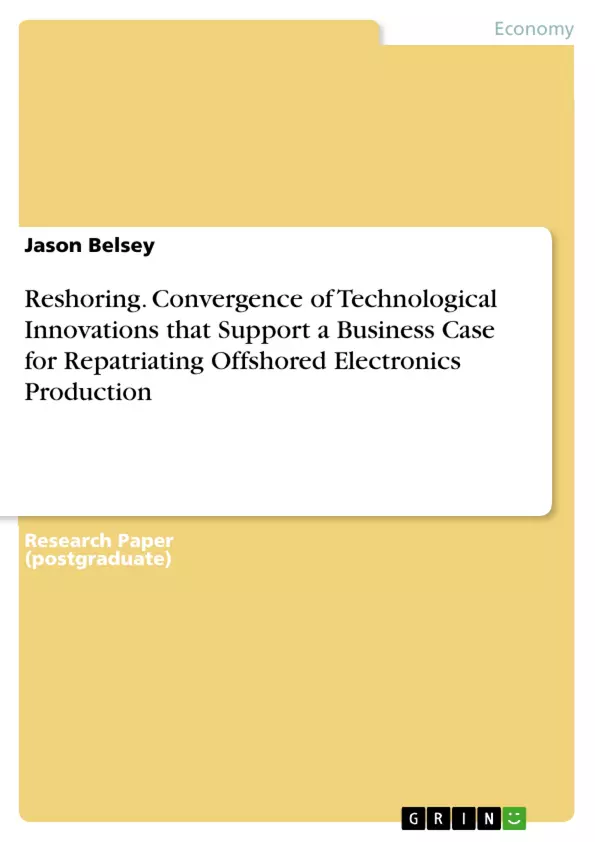The following report presents a justification for repatriating electronics manufacturing from China to the United States, by recommending a technological framework that serves to neutralize the benefits, namely lower labour costs, that lead to its original transition and expansion. This justification is specifically based on the premise that due to the expansion of global communications channels that have greatly improved the diffusion of new technological concepts, China’s access to technological innovation is not unique, and that its competitive factors of production are increasingly capable of being neutralized through the deployment of modern technological advances, including automation, artificial intelligence, 3D printing/adaptive manufacturing and others, and through a reduced level of human labour input. Further enhancing the desirability of this model are advantages that would be gained in operational efficiency, reduced energy usage, stability and time-to-market, through their deployment.
Inhaltsverzeichnis (Table of Contents)
- Executive Summary
- Introduction and Background
- Research Question
- Background/Literature Review
- Research Project Description
- Methodology
- Analysis
- Automation and Adaptive Robotics
- Additive Manufacturing
- Mass-Customization
- Distributed Manufacturing
- Big Data, Artificial Intelligence and Technological Convergence
- Conclusion and Future Research Direction
- References
Zielsetzung und Themenschwerpunkte (Objectives and Key Themes)
This research paper investigates the potential for repatriating electronics manufacturing from China to the United States, using technological innovations to mitigate the cost advantages that initially prompted offshoring. The focus is on how advanced technologies like automation, artificial intelligence, and 3D printing can create a competitive landscape where the United States can regain a manufacturing edge. This report seeks to establish a framework for implementing these technologies to facilitate this transition.
- The convergence of technological innovations
- The business case for reshoring electronics production
- The potential of automation and robotics to neutralize labor cost advantages
- The impact of advanced manufacturing technologies on the global electronics industry
- The role of artificial intelligence and big data in driving technological convergence
Zusammenfassung der Kapitel (Chapter Summaries)
- Introduction and Background: This chapter establishes the research question, outlining the goal of exploring the potential for reshoring electronics manufacturing from China to the United States. It introduces the concept of comparative advantage and its role in driving globalization, while acknowledging the changing dynamics of technological progress and its impact on factor endowments.
- Research Project Description: This chapter delves into the research methodology and presents an in-depth analysis of the technological innovations that have the potential to facilitate reshoring. These technologies include automation and adaptive robotics, additive manufacturing, mass-customization, distributed manufacturing, and the convergence of big data and artificial intelligence. The chapter examines the implications of each technology and their potential to neutralize the advantages that currently favor offshoring in China.
Schlüsselwörter (Keywords)
This research paper focuses on the convergence of technological innovations, reshoring, electronics manufacturing, automation, robotics, artificial intelligence, additive manufacturing, mass-customization, distributed manufacturing, big data, comparative advantage, and technological convergence.
- Quote paper
- Jason Belsey (Author), 2017, Reshoring. Convergence of Technological Innovations that Support a Business Case for Repatriating Offshored Electronics Production, Munich, GRIN Verlag, https://www.grin.com/document/384542



